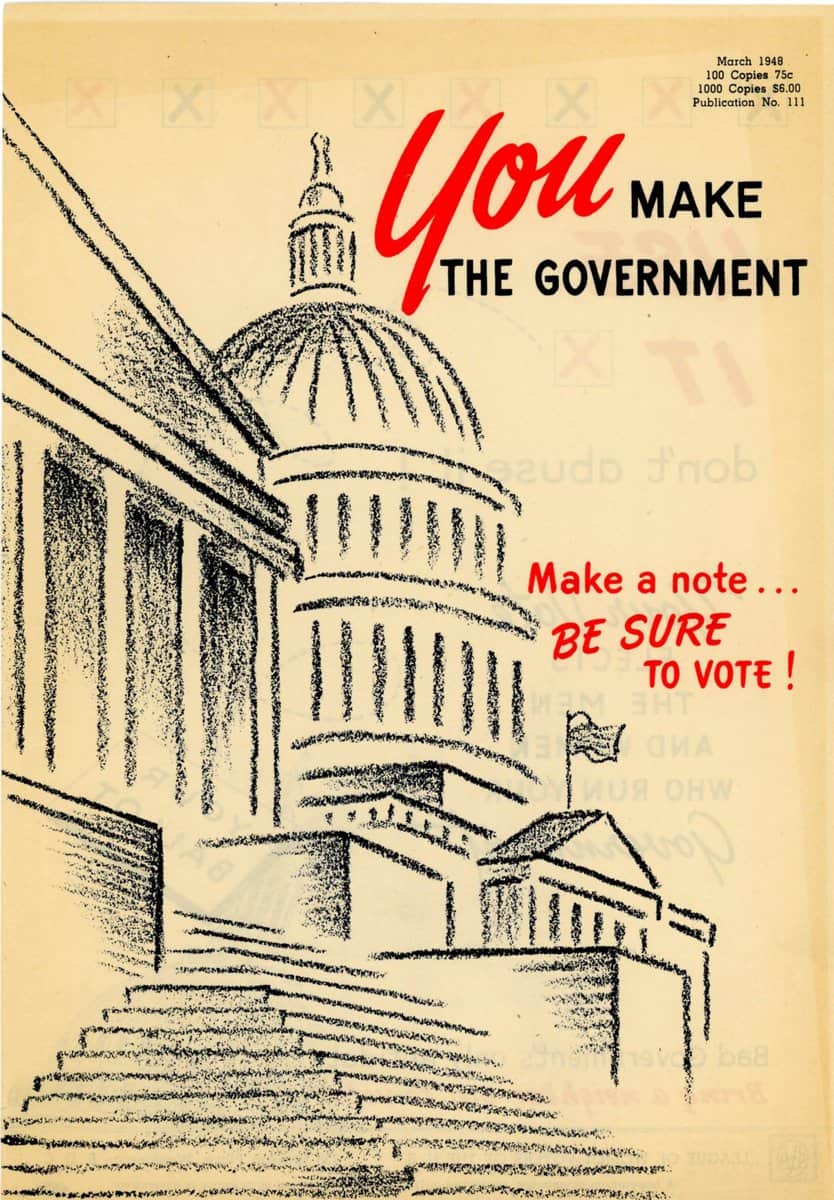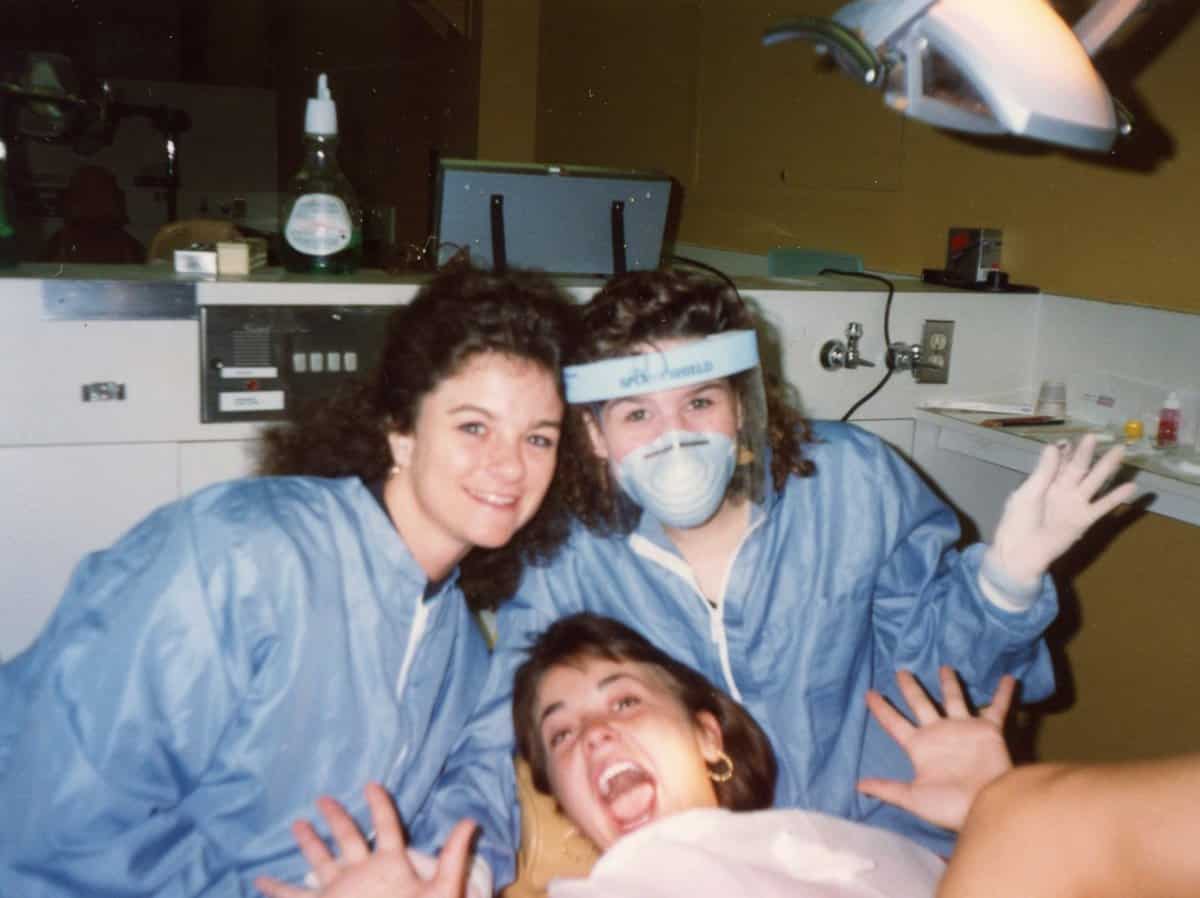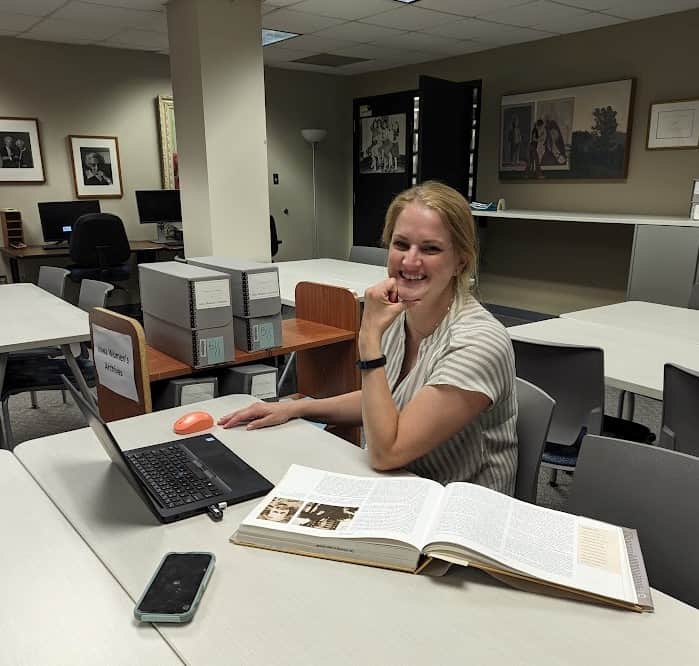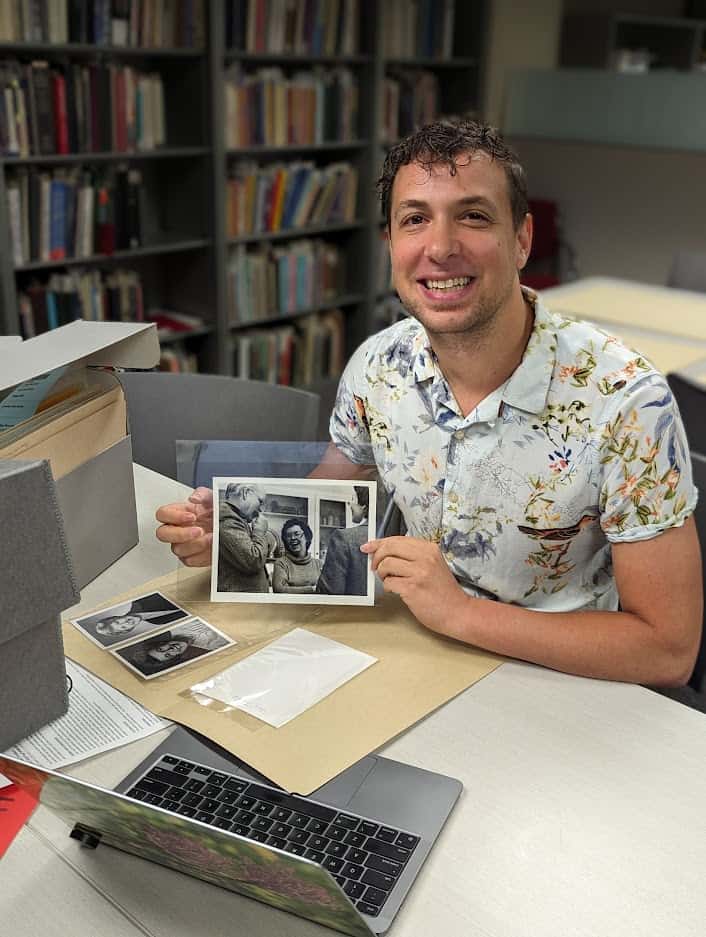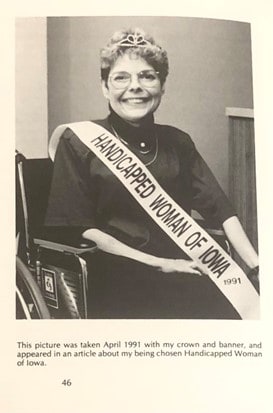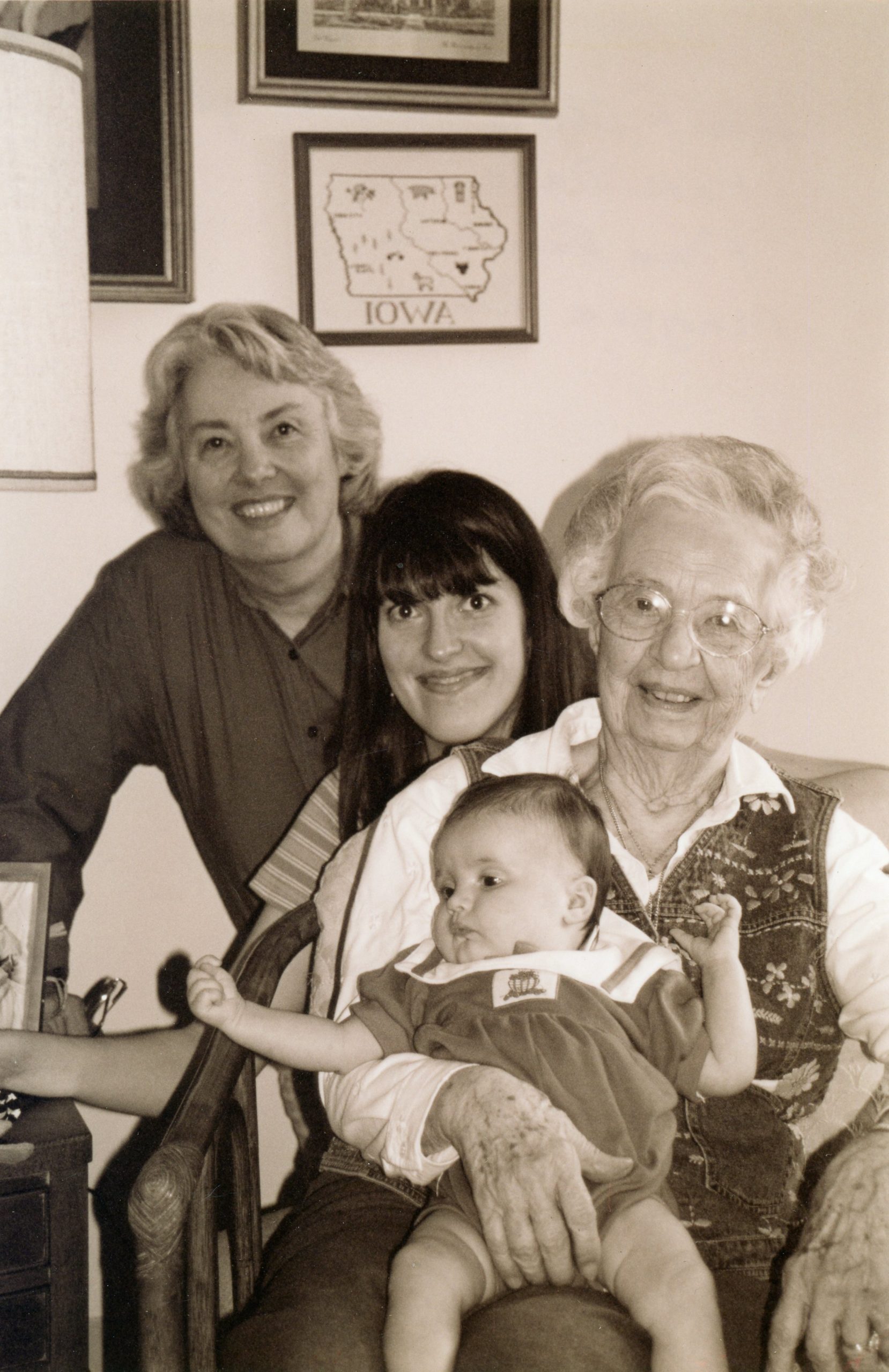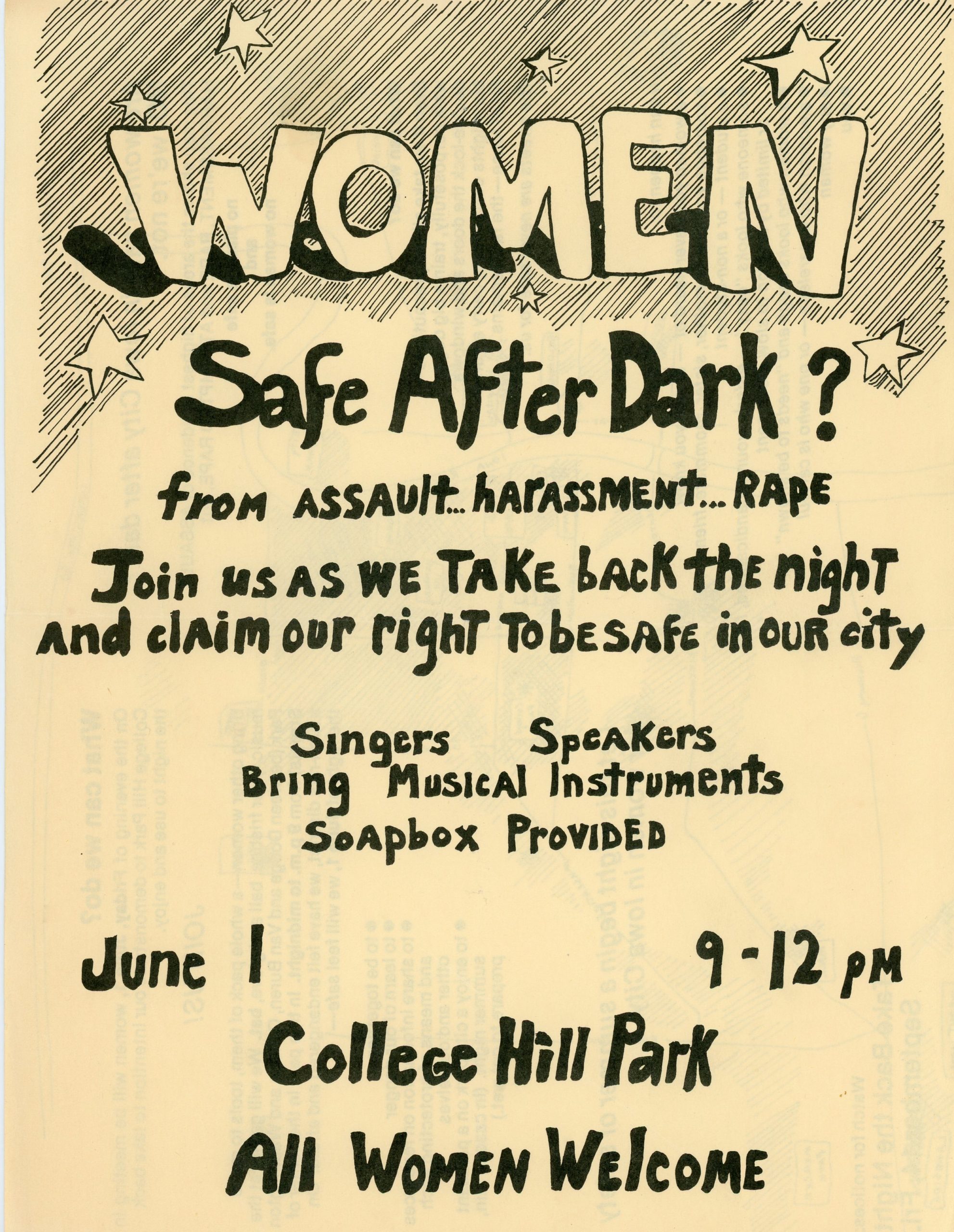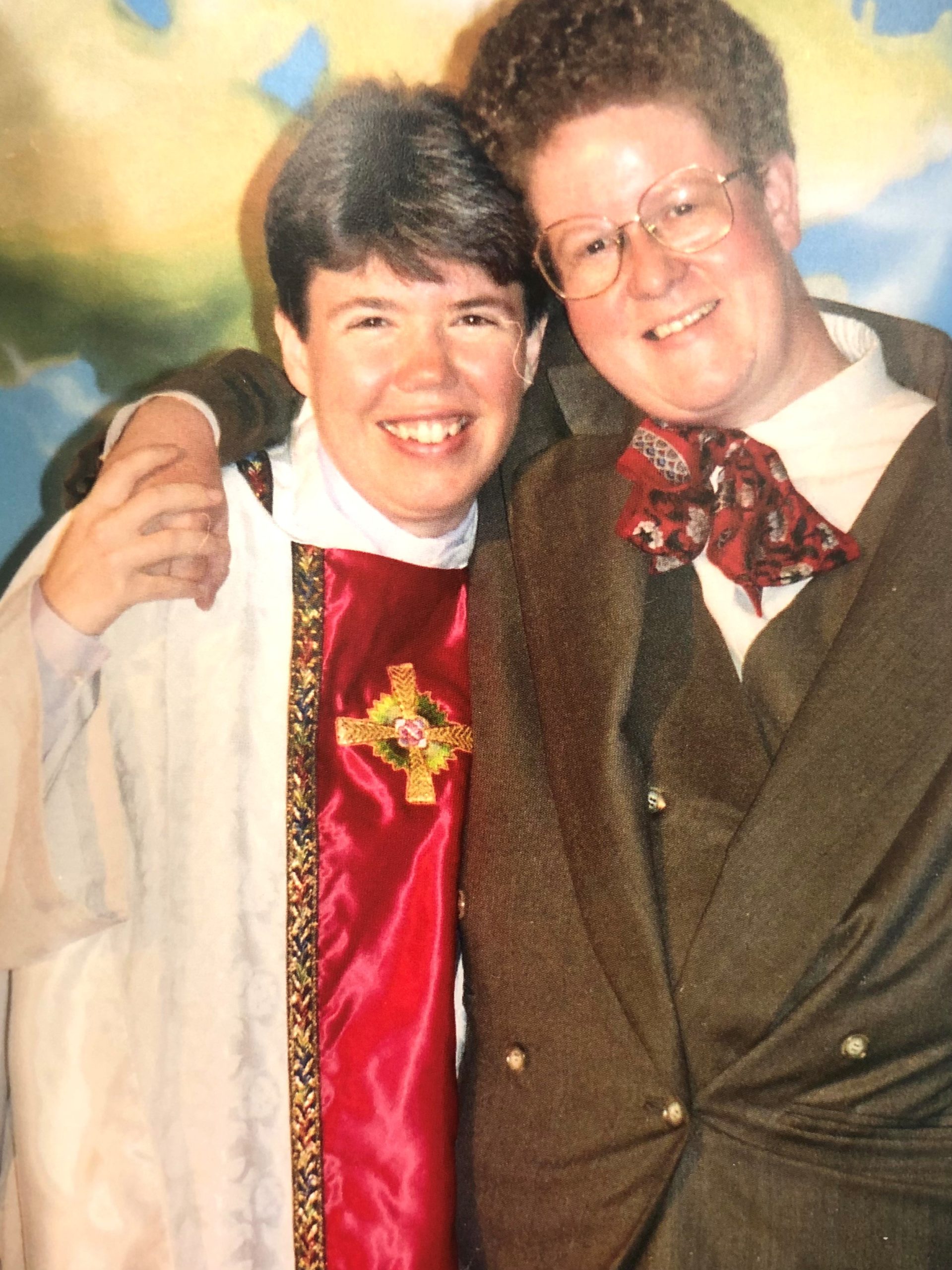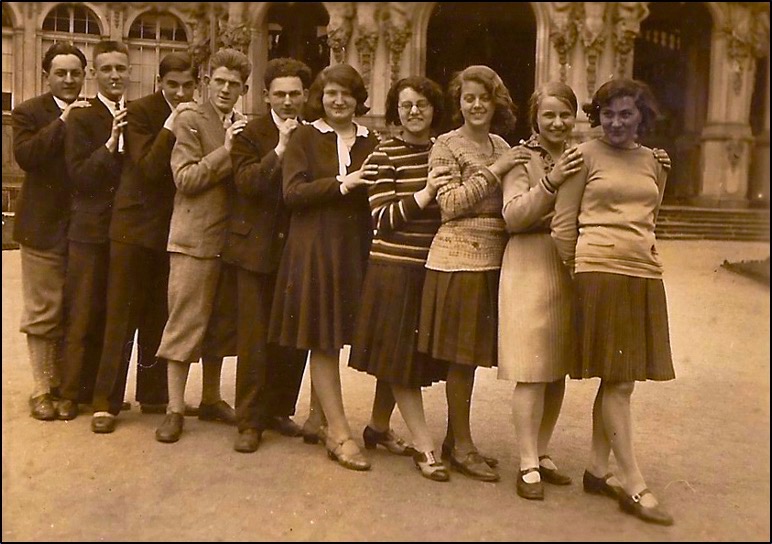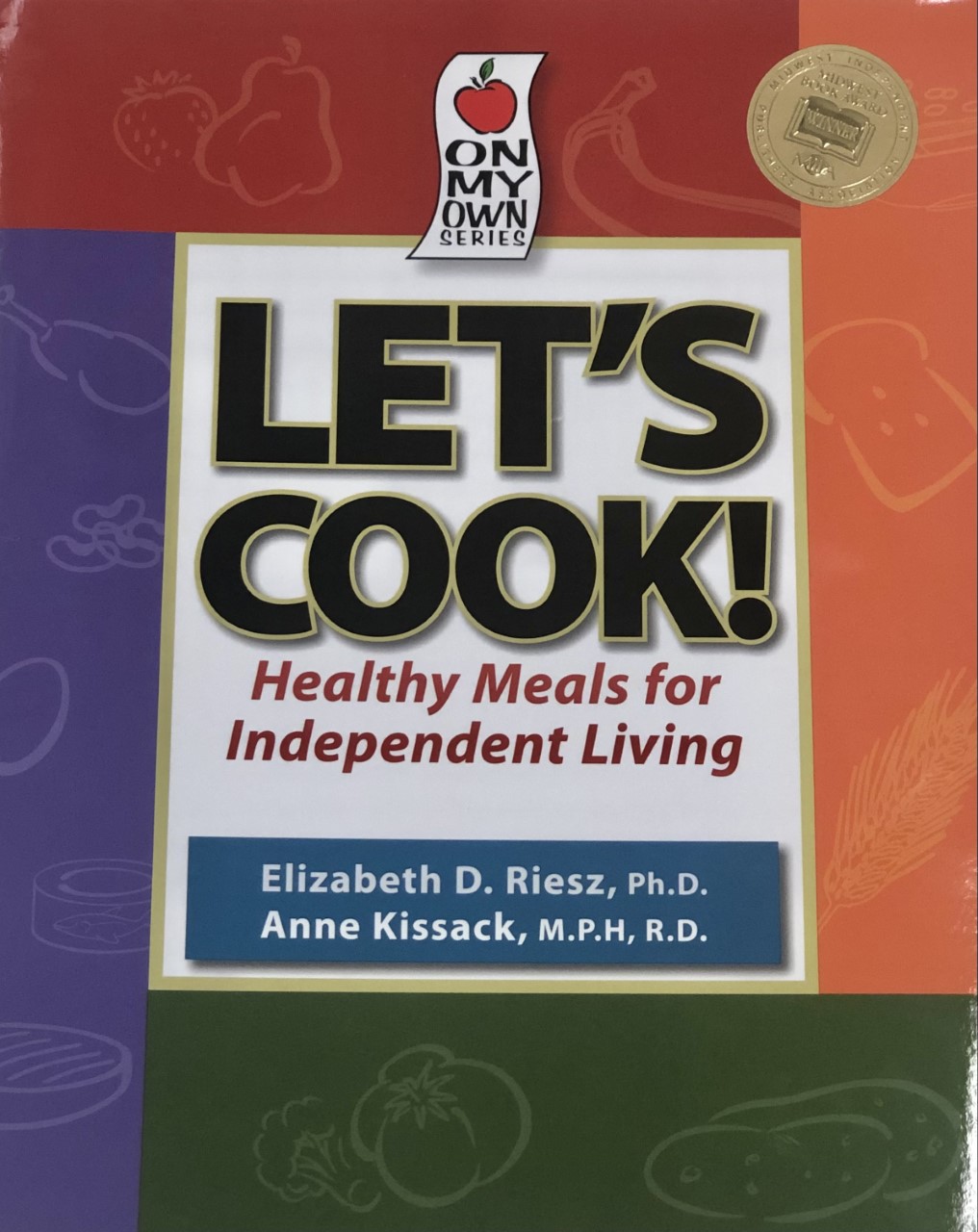A non-partisan organization, the LWV focuses on voters understanding their power and responsibility in government at all levels. It also emphasizes that for democracy to be for the people, citizens must engage with government at every level. In a 1947 project entitled You are Democracy, the LWV aimed to educate voters on the democratic process.
Author Archives: Anna Holland
Done biting their tongues: UI dental hygiene and gender discrimination
by Beatrice Kearns, graduate assistant, Iowa Women’s Archives The University of Iowa Dental Hygiene Program began in 1953 with 24 students and despite being nationally renowned, the female-dominated program did not make it to its 50th anniversary. Until the final graduating class in 1995, the program trained hundreds of hygienists. Students took classes in aContinue reading “Done biting their tongues: UI dental hygiene and gender discrimination”
Kerber Grant Recipient’s Work Will Feature Political Activist Edna Griffin
Edna Griffin, known as the Rosa Parks of Iowa, has gained deserved attention over the years for her civil rights activism, especially for her role in the effort to desegregate the lunch counter at Katz Drug Store in Des Moines. Her actions resulted in a successful suit against the store under Iowa’s 1884 Civil RightsContinue reading “Kerber Grant Recipient’s Work Will Feature Political Activist Edna Griffin”
Kerber Grant Recipient Ezra Temko Delves into Gender Parity in Politics at IWA
Every year, the Linda and Richard Kerber Travel Grant allows researchers from across the country to come to Iowa City and use the Iowa Women’s Archives’ collections. Ezra Temko, is the grant’s first second-time winner. He first visited the IWA in 2018 as a PhD candidate in Sociology from the University of New Hampshire, where hisContinue reading “Kerber Grant Recipient Ezra Temko Delves into Gender Parity in Politics at IWA”
Women, Disability, and Reparative Description in IWA
The following post was written by IWA Student Specialist, Abbie Steuhm. In the process of creating a LibGuide on women and disability for the Iowa Women’s Archives (IWA), I discovered a trove of artifacts from disabled women and disability advocates. However, this did not come easy as the history was hidden by its description. IContinue reading “Women, Disability, and Reparative Description in IWA”
Enterprising Women: Three Profiles from the Fellows Family papers
The following post was written by IWA Student Specialist, Avery Porter. Clara Conrad entered the Graham Hospital Training School for Nurses in 1902. She was the first student to enroll in the new program and the only person in her class. A full graduation ceremony was held in her honor a year later proclaiming herContinue reading “Enterprising Women: Three Profiles from the Fellows Family papers”
Women Safe After Dark? The Beginnings of Take Back the Night at the University of Iowa
On September 12, 1979, an advertisement for a rally appeared in the campus newspaper, the Daily Iowan. The outline of a woman with bows and arrows, shooting into the night sky was accompanied with the promise, “Friday evening at 8 p.m., the women of Iowa City will have a chance to support each other inContinue reading “Women Safe After Dark? The Beginnings of Take Back the Night at the University of Iowa”
Kittredge Cherry and Audrey Lockwood: A Love Story
This post was written by IWA Student Specialist, Abbie Steuhm. The LGBTQ+ community has grown in incredible size and visibility in the last decade. The legalization of same-sex marriage in the U.S. in 2015 was a colossal milestone for LGBTQ+ rights, and it has arguably helped in the normalization and acceptance of LGBTQ+ people nationwide.Continue reading “Kittredge Cherry and Audrey Lockwood: A Love Story”
Kick off Women’s History Month with the Iowa Women’s Archives
The Iowa Women’s Archives (IWA) will kick off Women’s History Month with an event at the Iowa City Public Library! Welcoming the Immigrants: Refugee Resettlement in Jewish Iowa will bring Dr. Jeannette Gabriel of the Schwalb Center for Israel & Jewish Studies at theUniversity of Nebraska-Omaha to Iowa City. In her talk, Gabriel will useContinue reading “Kick off Women’s History Month with the Iowa Women’s Archives”
Disability Rights in the Elizabeth Riesz Papers
The following post was written by IWA Student Assistant, Abbie Steuhm. The Disability Rights Movement has seen great progress and recognition in recent years; however, as with most social movements, the historic past for disabled people is one of severe discrimination and offensive, prejudiced, and even racist language. On January 30, 1972, Anthony Shaw, M.D. published anContinue reading “Disability Rights in the Elizabeth Riesz Papers”
